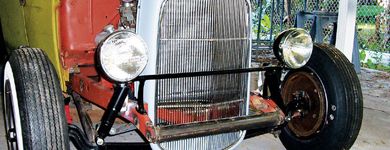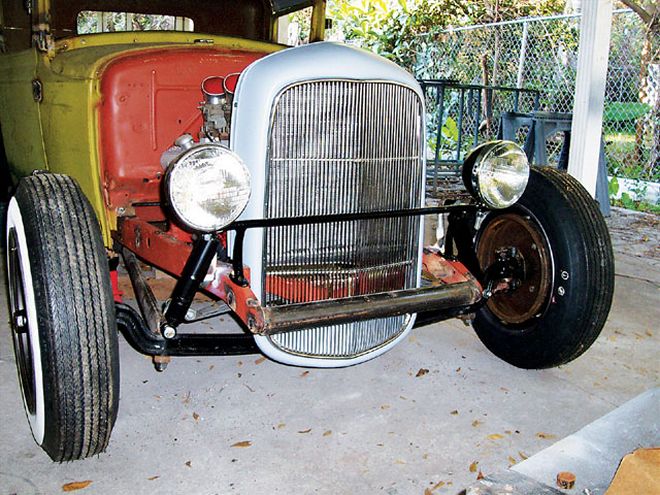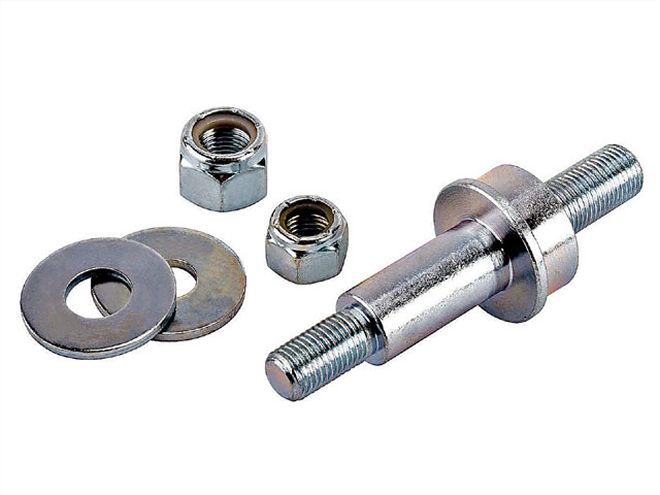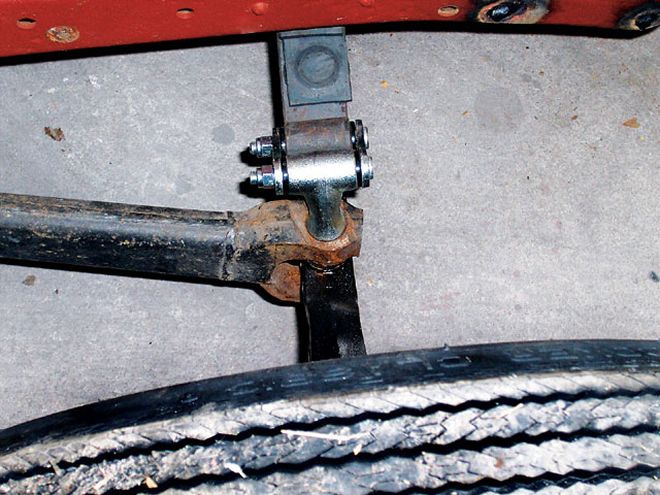

It's no stretch to say the Ford wishbone makes one of the most beautiful suspensions in the hot rod world. While Ford engineers hid the things under cars for years, enthusiasts were quick to capitalize on the wishbones' beautifully forged ends and graceful tapers. As a result, the old Ford wishbone pretty much came to define the postwar hot rod look.
As great as they are, they aren't without their shortcomings. First off, their popularity made them expensive. Take the darlings of the bunch, the '32-34 wishbones. Whereas a reaction to expensive parts once catalyzed the "traditional" aesthetic, a decent example nowadays easily fetches $500. What's more troubling is the fact that their homely sisters, the stubby Model A wishbones, are starting to catch up.
 Speedway's 910-36096 shock-mounting studs are the key to this operation. With 5/8-inch-diameter, 1 1/4-inch-long shanks, they accommodate most popular shocks.
Speedway's 910-36096 shock-mounting studs are the key to this operation. With 5/8-inch-diameter, 1 1/4-inch-long shanks, they accommodate most popular shocks.
Then there's the shock-mounting issue. Adapt a set of tube-type shocks to an early Ford suspension and you're in for some significant fabrication. Whereas aftermarket hairpin batwings and four-bar brackets have provisions for lower shock mounts, the Ford wishbones, regardless of year, don't. In a bid to create these lower shock mounts, enterprising builders generally attached the lower ends of the shocks to the axle itself. While mounting the shock to the axle can work favorably, the practice generally detracts from the axle's look-another beautifully sculpted suspension component in its own right.
From 1935 until the end of the wishbone era, 1948, Ford made three examples worth noting. They're both long and elegant, but a weld bead along the top of these wishbones discouraged many builders from using them in the past. While their relative lack of popularity makes them affordable, they have a greater redeeming quality than just price.
 Mike used a '37-40 wishbone (the '35/36 differs slightly by spring boss shape; the '41 by ball diameter; the '42-48 by overall length and doglegs).
Mike used a '37-40 wishbone (the '35/36 differs slightly by spring boss shape; the '41 by ball diameter; the '42-48 by overall length and doglegs).
Whereas most builders eliminate the spring bosses altogether in a bid to make the later 'bones look earlier, Mike Longley noticed he could use them to his advantage. By trimming them just right and modifying the stub with a common and affordable bung, he found the spring bosses made ideal lower shock mounts.
Rather than keeping it a guarded secret, Mike instead snapped a few shots to show us how the operation works. While his way might not be the time-honored tradition passed down from generation to generation, it's worth noting that it shares the same philosophy as other hot rod practices: It's creative, it makes use of available and affordable materials, and it doesn't use any technology that wasn't available when Truman was in office. If it didn't fly in the face of logic, I guess you could call it a new tradition.
If it in fact finds its way in the traditional builder's bag of tricks, we suggest the following: Buy as many of these orphan wishbones as you can. If the earlier wishbones serve as any indication, independent front suspension will be the only affordable alternative once they're gone. And in case you're wondering, I don't think future generations will write stories extolling the classic aesthetic virtues of IFS.